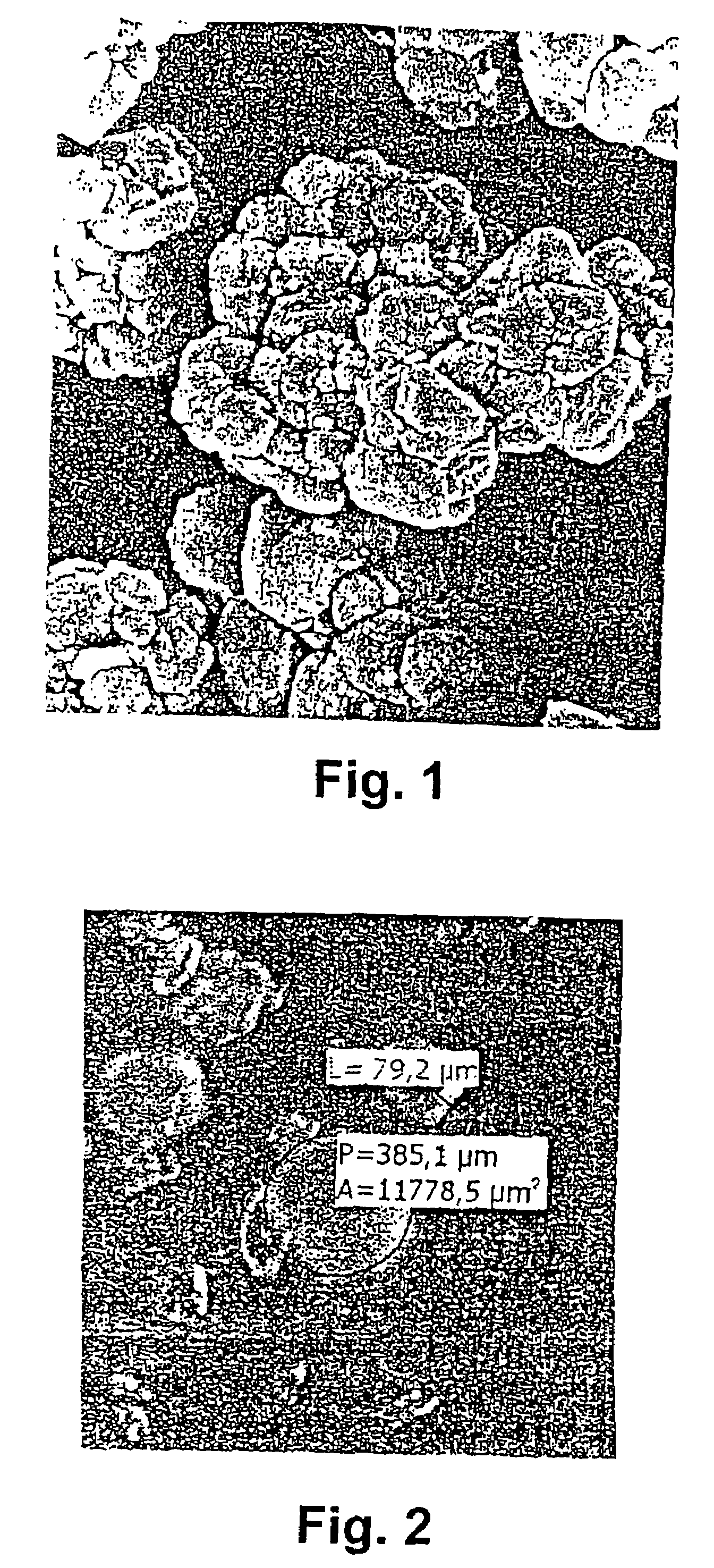Synthetic stone of high translucence, method of its production and use
a technology of synthetic stone and translucence, applied in the field of synthetic stone with high translucence, can solve the problems of not being very translucent, its surface, and quickly worsening, and achieve the effects of low viscosity, high translucency, and poor wettability
- Summary
- Abstract
- Description
- Claims
- Application Information
AI Technical Summary
Benefits of technology
Problems solved by technology
Method used
Image
Examples
example 1
[0019]68.8 weight parts (35.6% by weight) of methacrylate, reactive resin with a viscosity of 4 mPas and a refractive index of light of 1.4196 was mixed with 106.5 weight parts (55.11% by weight) of powdery alumina trihydrate of specific weight 2.4 g / cm3, a refractive index of light of 1.58, containing 70% by weight of globular particles with an arithmetic middle diameter of 67 μm and with 15.6 weight parts (8.54% by weight) of white chips of diameter 0.5-3.15 mm, as well as with 0.1 weight parts of powdery titanate oxide (0.05% by weight). The mixture was polymerised in a flat frame mould separated by a wax separator during initiation with 1.35 weight parts of a peroxide starter. The perception of translucence of the formed synthetic stone, expressed as the light transmission, measured through a 6 mm thick plate, came to 22.5%.
example 2
[0020]806 weight parts (35.2% by weight) of metacrylate, reactive resin with a viscosity of 4 mPas and a refractive index of light of 1.4196 was mixed with 1470 weight parts (64.17% by weight) of filler comprised of 1120 weight parts (76.2% by weight of filler) of powdery alumina trihydrate (Al2O3. 3 H2O of specific weight 2.4 g / cm3), and 350 weight parts (23.8% be weight) of a substitute formed from a translucent, styrene-divinylbenzene pearl-like copolymer with particles 30 to 350 μm in size. After evacuation the mixture was polymerised in a flat, longitudinal mould modified by a silicon separator, during initiation with 14.7 weight parts (0.64% by weight) of a combination, peroxydicarbonate starter. A 6 mm thick layer of the polymeric stone formed achieved a value of 24.2% when determining the light transmission.
example 3
[0021]A polymeric stone in the shape of a plate of thickness 6 mm and with a light transmission of 30% was formed by mixing 708 weight parts (32.7% by weight) of reactive, metacrylate resin with a viscosity of 26 mPas and a refractive index of light of 1.431, with 1445 weight parts (66.6% by weight) of powdery alumina trihydrate with a refractive index of light of 1.58, with 68.8% by weight of spherical alumina trihydrate, with an arithmetical mean diameter of 67 μm and surface area of approx. 0.2 m2 / g, under evacuation and initiated with 14.2 weight parts (0.6% by weight) of a peroxymaleatoe starter and polymerised in flat frame mould separated by a wax separator.
PUM
| Property | Measurement | Unit |
|---|---|---|
| size | aaaaa | aaaaa |
| size | aaaaa | aaaaa |
| particle size | aaaaa | aaaaa |
Abstract
Description
Claims
Application Information
 Login to View More
Login to View More - R&D
- Intellectual Property
- Life Sciences
- Materials
- Tech Scout
- Unparalleled Data Quality
- Higher Quality Content
- 60% Fewer Hallucinations
Browse by: Latest US Patents, China's latest patents, Technical Efficacy Thesaurus, Application Domain, Technology Topic, Popular Technical Reports.
© 2025 PatSnap. All rights reserved.Legal|Privacy policy|Modern Slavery Act Transparency Statement|Sitemap|About US| Contact US: help@patsnap.com

